When Sea to Summit set about creating their Alto and Telos ranges of lightweight backpacking tents a few years ago, they drafted in Jake Lah, founder and head designer at DAC and something of a doyen when it comes to tent architecture. The aim was to create ultralight 3-season tents that didn’t sacrifice liveability in the same way that many other modern backpacking tents do.
The semi-freestanding design of the lightweight Alto TR2 Plus is nothing new. This two-person, 3-season tent has plenty in common with many other cutting-edge shelters on the market. What sets it apart is its innovative Tension Ridge architecture, a cross pole that widens the peak and creates near-perpendicular walls, angling upwards like a bird’s wingspan to maximise head and shoulder room.
It literally raises the roof, creating ample headroom, steep walls, large doors and plenty of vestibule space. The result is a gloriously liveable backpacking tent, despite weighing only 1,447g.
Compared to the standard TR2, the Plus version is more robust, featuring a nylon inner instead of the standard model’s mesh, as well as a more rugged groundsheet.
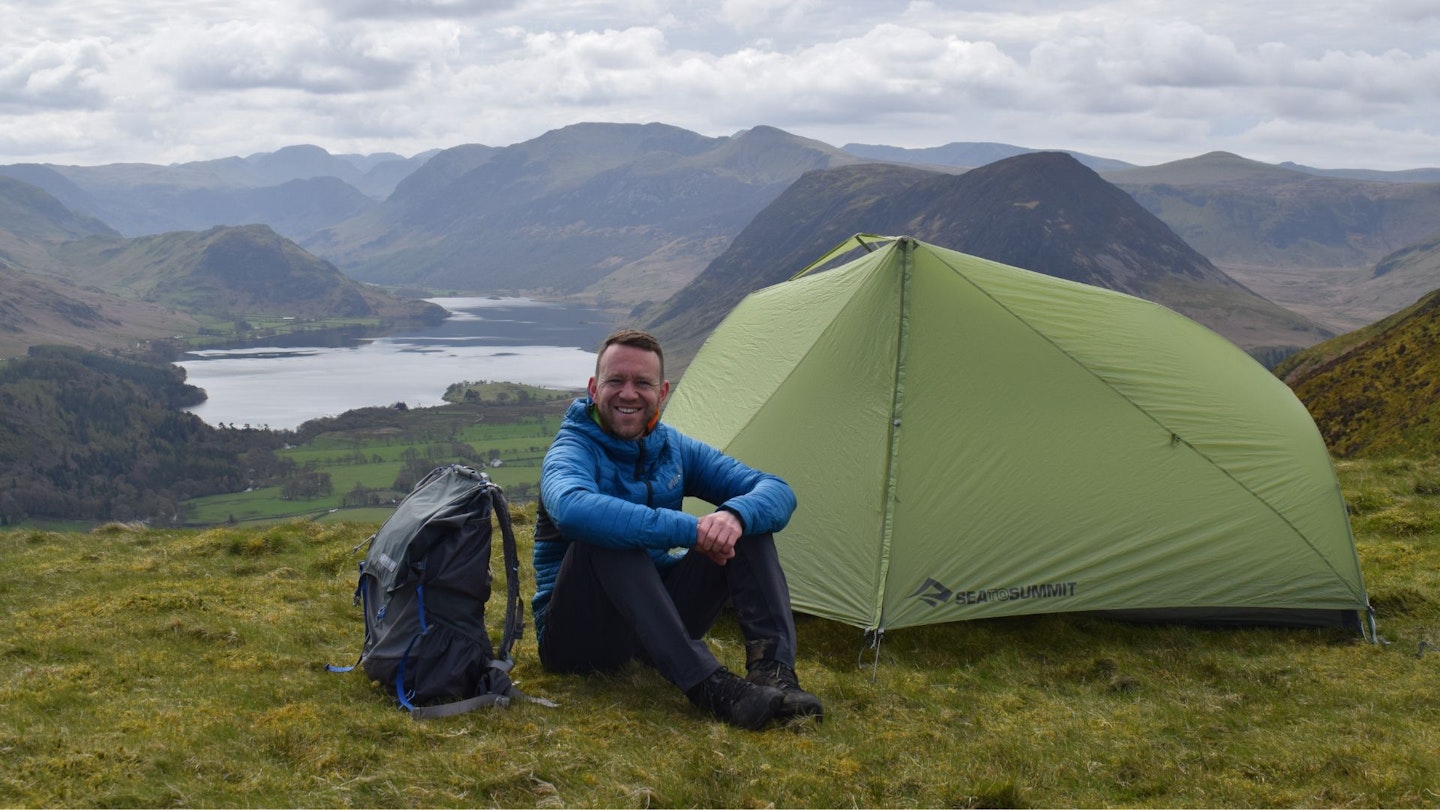 lfto
lftowww.alpinetrek.co.uk
Pros
- Superb liveability
- Good headroom
- Spacious interior
- Clever design
- Impressive features
Cons
- Very expensive
- Not the best in high winds
- Hydrostatic head waterproofing rating could be
better - Materials are very thin
| Type | Semi freestanding |
| Weight | 1,447g |
| Packed size | 53x13cm |
| Doors | 2 |
| Vestibules | 2 |
| Inner | 20D ripstop nylon |
| Fly | 15D ripstop nylon w/ silicone/polyether PU coating (1200mm HH) |
| Groundsheet | 20D ripstop nylon (2500mm HH) |
| Poles | Aluminum DAC TH72M |
Shape, structure, pitching, and internal liveability
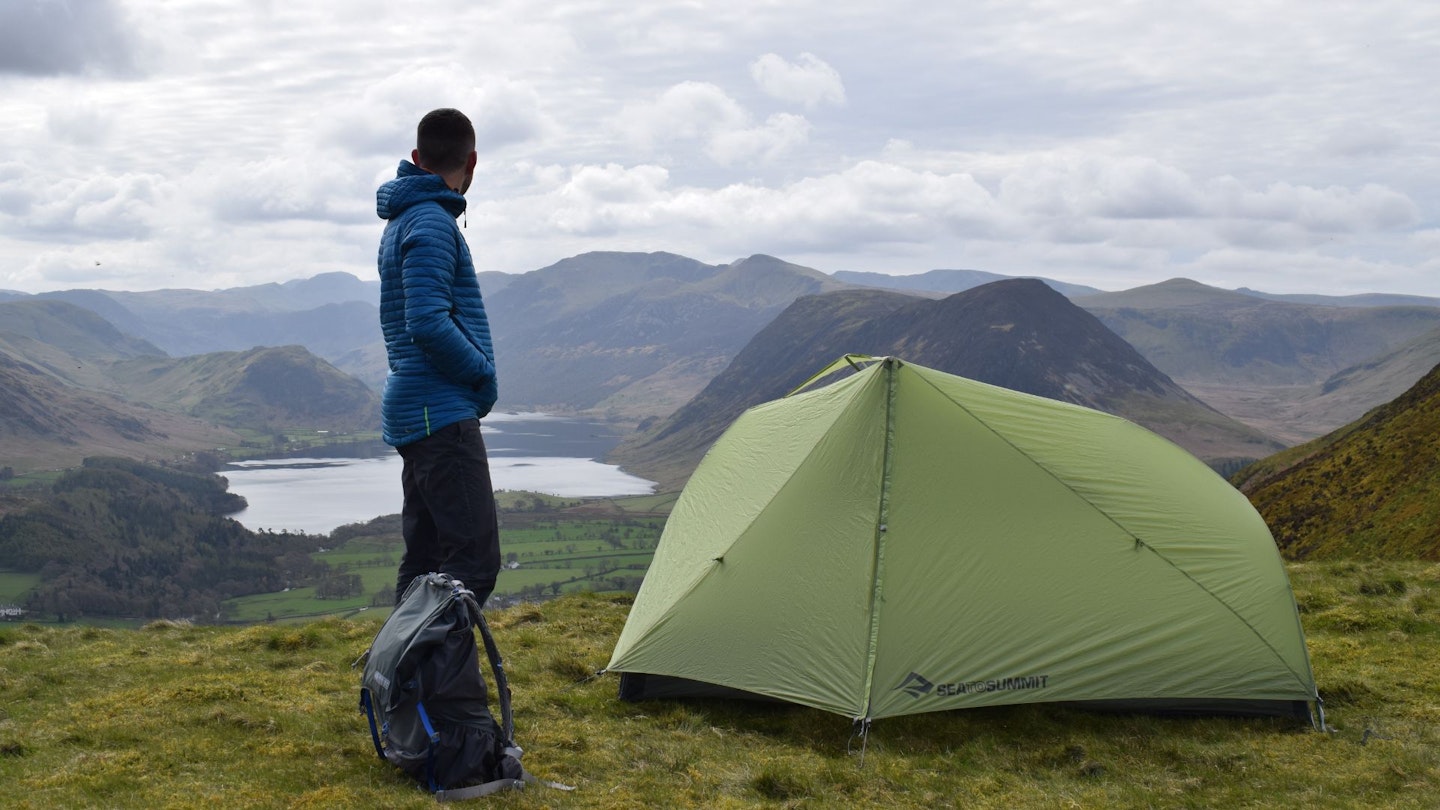
As you’d expect, considering the tent was designed alongside DAC’s founder, the Alto TR2 Plus makes use of a strong yet lightweight DAC NSL aluminium pole-hub. It’s usually pitched inner-first by staking out the corners before attaching the pole-hub structure. This isn’t ideal if it’s raining cats and dogs, though there’s also the option of erecting the rainfly first, which solves this issue entirely.
The poled-hub structure is broadly Y-shaped with an integrated cross bar, the Tension Ridge, towards the head, with colour coding to assist with pitching. The arms of the Y slot into the stake-out points at the foot end, while the other end slots into a stakeout point at the head. The inner is then clipped onto the skeletal pole structure in a “suspended” style.
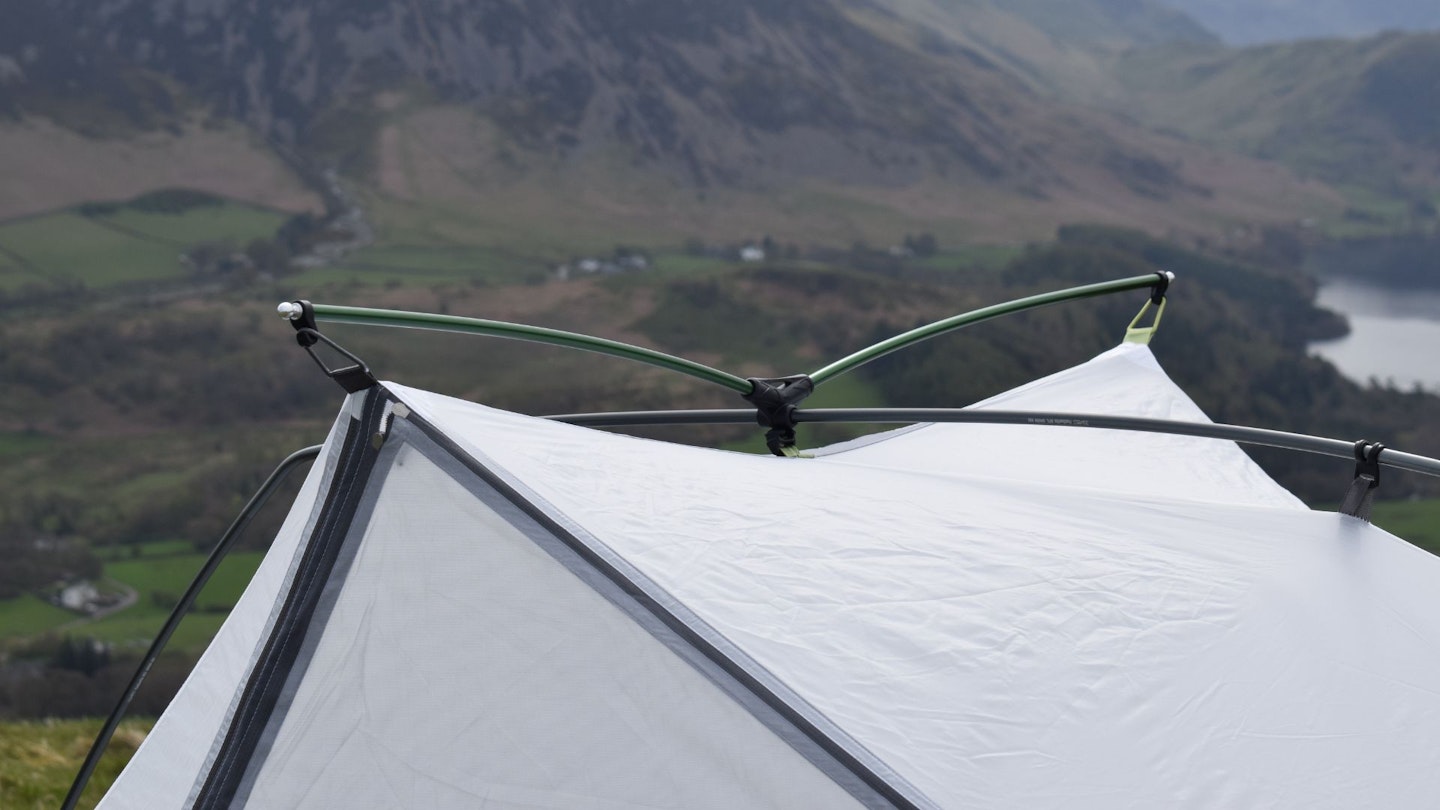
The Tension Ridge design cantilevers the cross bar upwards above the head end of the tent. This has the effect of pulling the walls upwards and creating a superb amount of headspace, especially for an ultralight backpacking tent. You also get large doors for comfortable access and egress, while the design creates more vestibule space too. With this innovation, Sea to Summit have raised the bar, in more ways than one.
This all creates a superbly liveable tent. The inner area is trapezium shaped, wider at the head and tapered at the feet, with room for two to sleep side-by-side. Once the rainfly is attached, the vestibule spaces are pegged out, creating storage areas for wet gear and muddy boots.
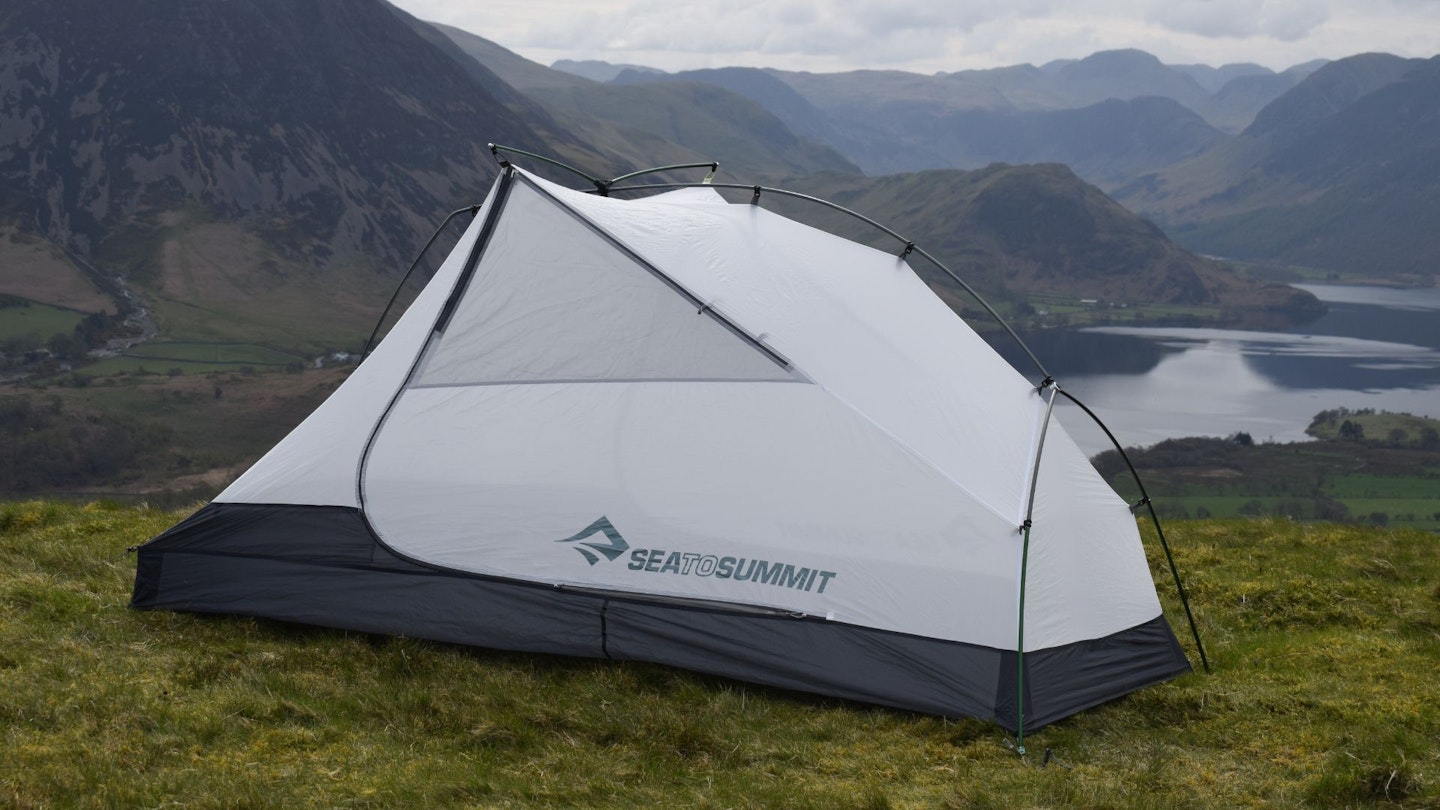
The all-round design is excellent and the Tension Ridge is superb. The only thing we don’t like is how the tips of the Tension Ridge clip into the fabric pouches of the outer. It’s rather fiddly to do and doesn’t seem like the best solution for the purpose.
Waterproofing
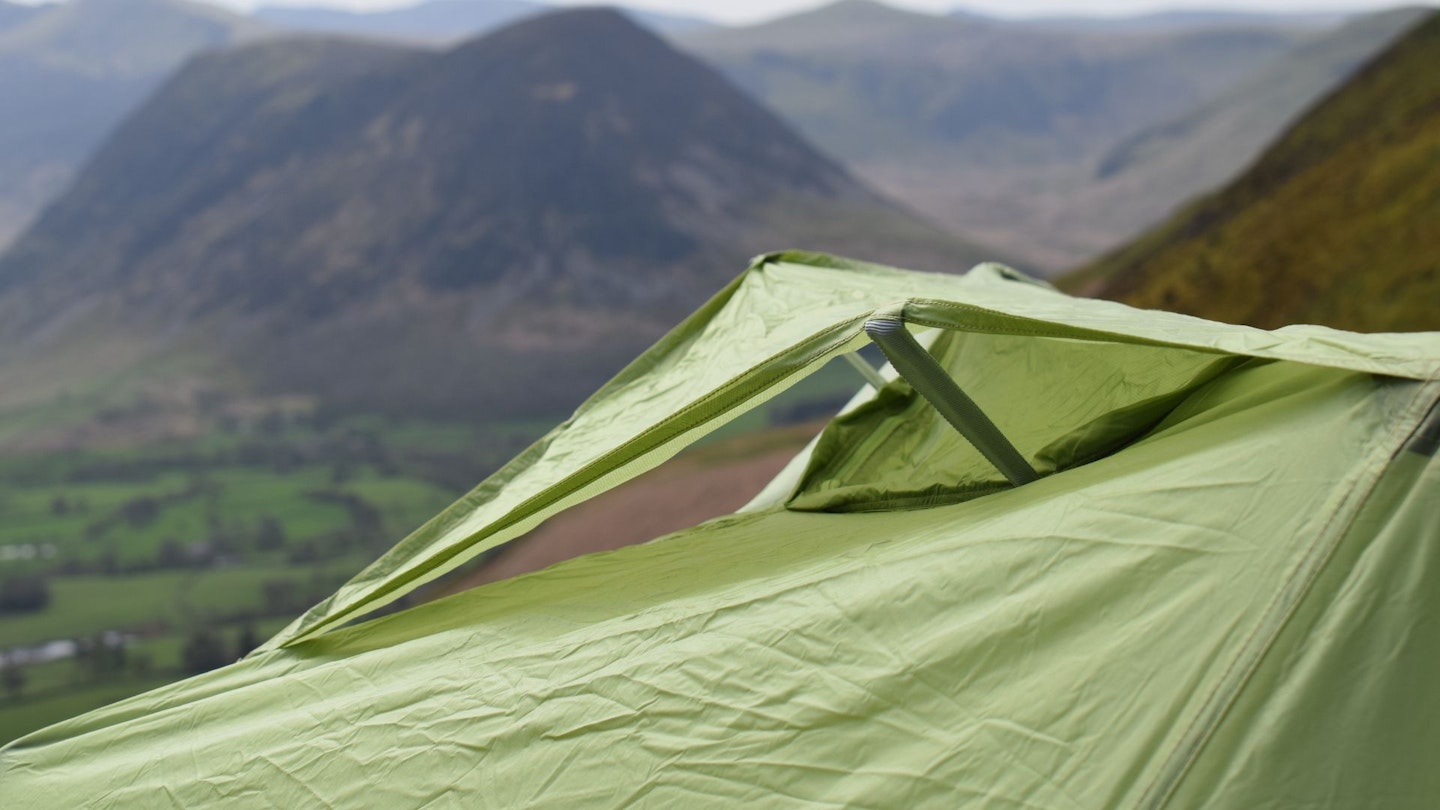
Thanks to its nylon inner and the more rugged groundsheet, the Alto TR2 Plus is more capable in a deluge than its slightly lighter sibling, the standard Alto TR2 (£525). The groundsheet is a 20-denier nylon with a hydrostatic head rating of 2,500mm, compared to the standard model’s 1,200mm. The 15-denier nylon rainfly’s hydrostatic head rating is 1,200mm, with Sea to Summit stating that it “provides long-lasting waterproof performance”.
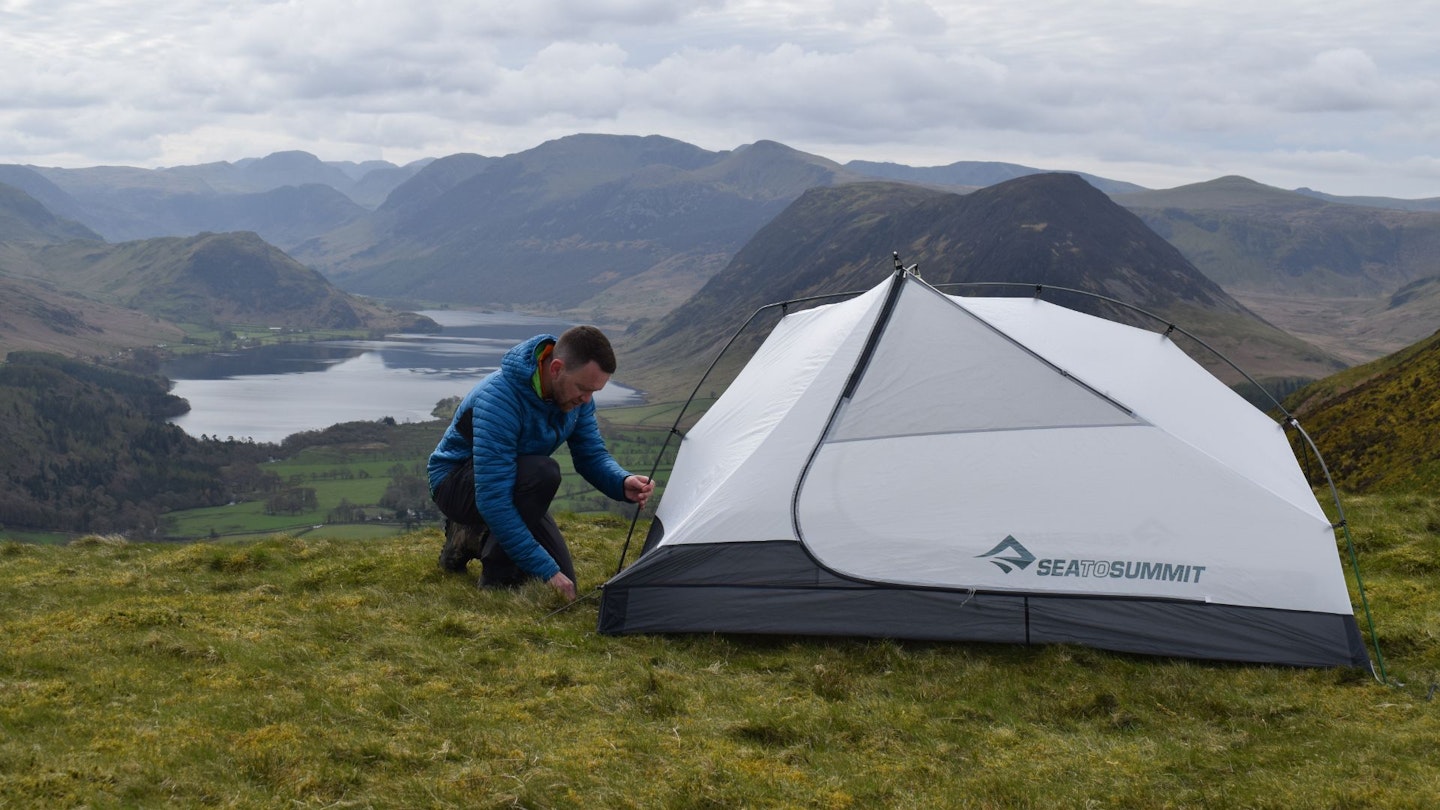
British campers will be pleased to hear that Sea to Summit say the Alto TR2 Plus is “ideal for wet and boggy conditions”. However, its hydrostatic head ratings are admittedly a little underwhelming for a shelter at this price point, especially if you’re intending on heading for our often-soggy fells, corries, cwms, bens, pens and stobs.
Of course, hydrostatic head isn’t everything – the rainfly is coated with a silicone and polyether polyurethane shield and its seams are fully taped and, when properly tensioned, it’ll repel most conditions.
Condensation
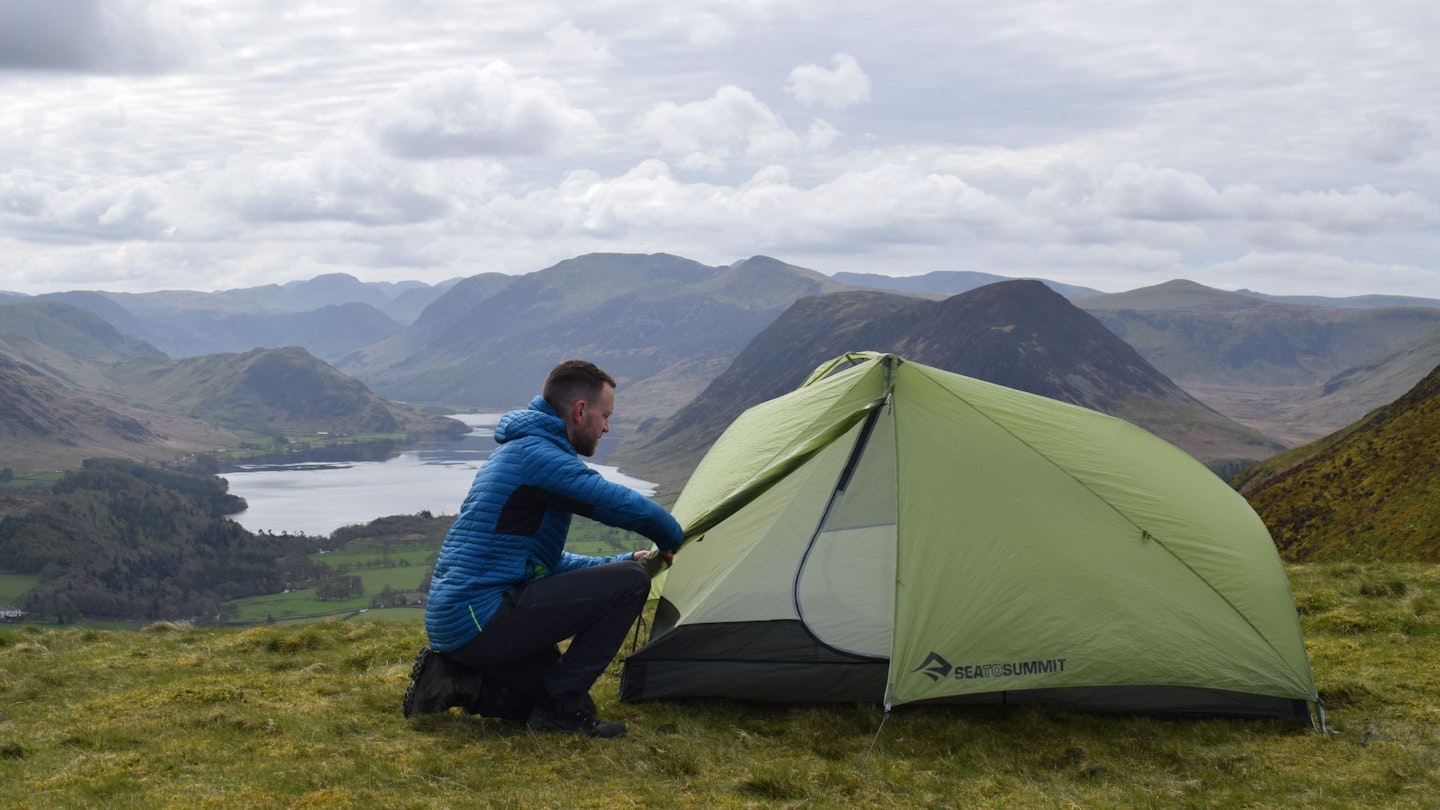
The Plus is slightly less breathable than the standard Alto TR2, as the inner’s mesh has been replaced by a more robust nylon. Nevertheless, the tent’s so-called Baseline and oversized Apex Vents provide a good amount of airflow, helping to prevent condensation.
The Apex Vents, which can be zipped shut if necessary, allow moisture to escape, while channelling fresh air into the tent. Meanwhile, the Baseline Vent allows you to open up the lower portion of the door and can be closed off in challenging conditions. Furthermore, the flysheet doesn’t peg out completely flush to the ground, meaning there’s a small gap for improve air flow below it.
Wind protection
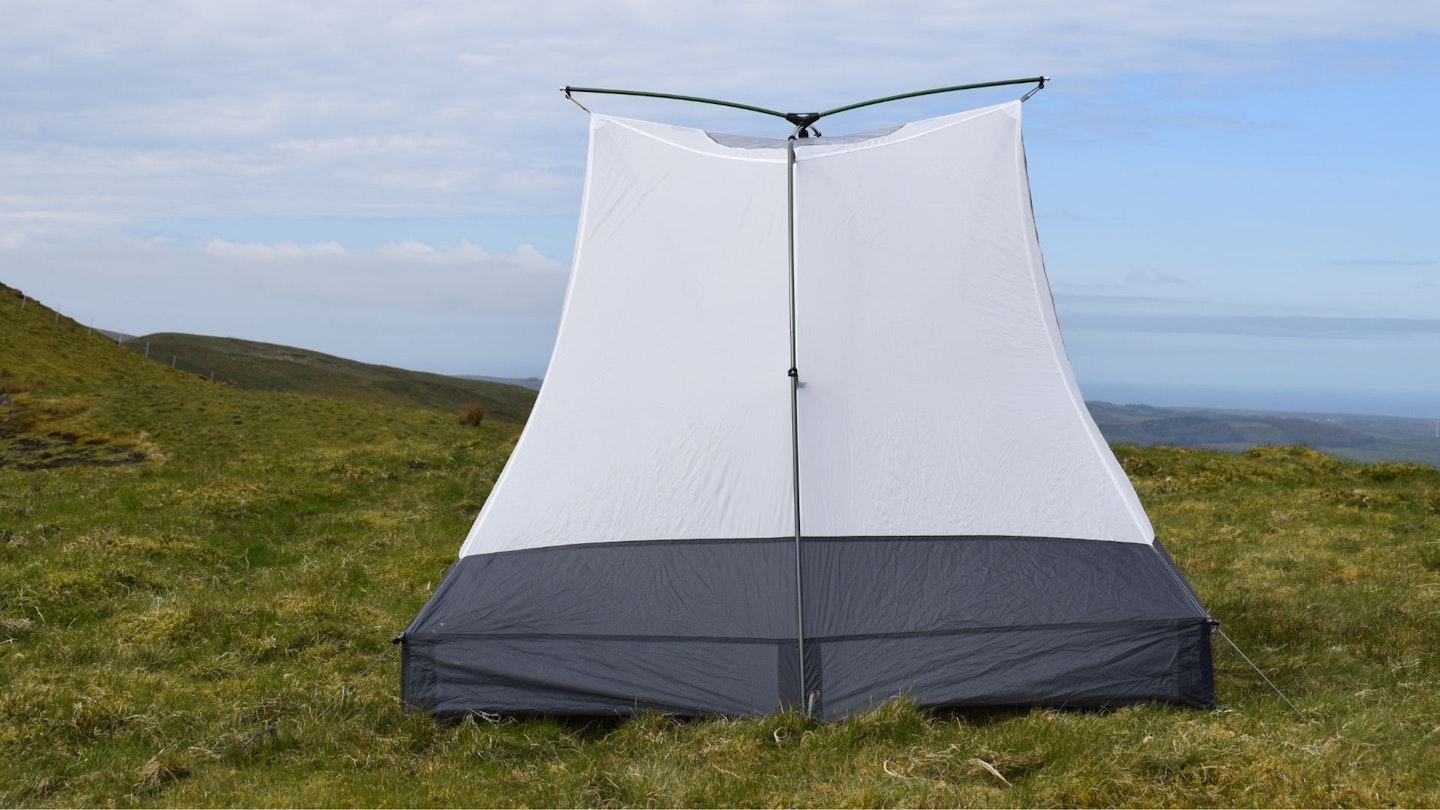
As an ultralight shelter with steep, gust-catching walls, it’s not surprise that the Alto TR2 Plus doesn’t stand up to windy conditions as well as lower profile backpacking tents, such as the Terra Nova Starlite 2){href='https://www.livefortheoutdoors.com/camping/tents/terra-nova-starlite-2-review/(opens in a new tab)' }. However, when set up sensibly in a well-chosen spot, it’ll still cope with most scenarios – just be prepared to change any plans to camp on a summit if it’s blowing a hoolie.
Sea to Summit stresses the need to deploy the four supplied guylines for wind speeds above 20mph, as well as recommending that it should be pitched with the foot end facing into the prevailing wind.
Weight and packed size

The Alto TR2 Plus weighs in at an impressive 1447g according to our scales, which is all the more remarkable considering the ample living space you get. This is broken down as follows: flysheet including four guylines (477g), inner (536g), tent pole (277g), tent pole pag (25g), 11 pegs (88g), peg bag (4g) and main carry bag (40g). Further grams can be shed by ditching either the inner or the flysheet, depending on the weather.
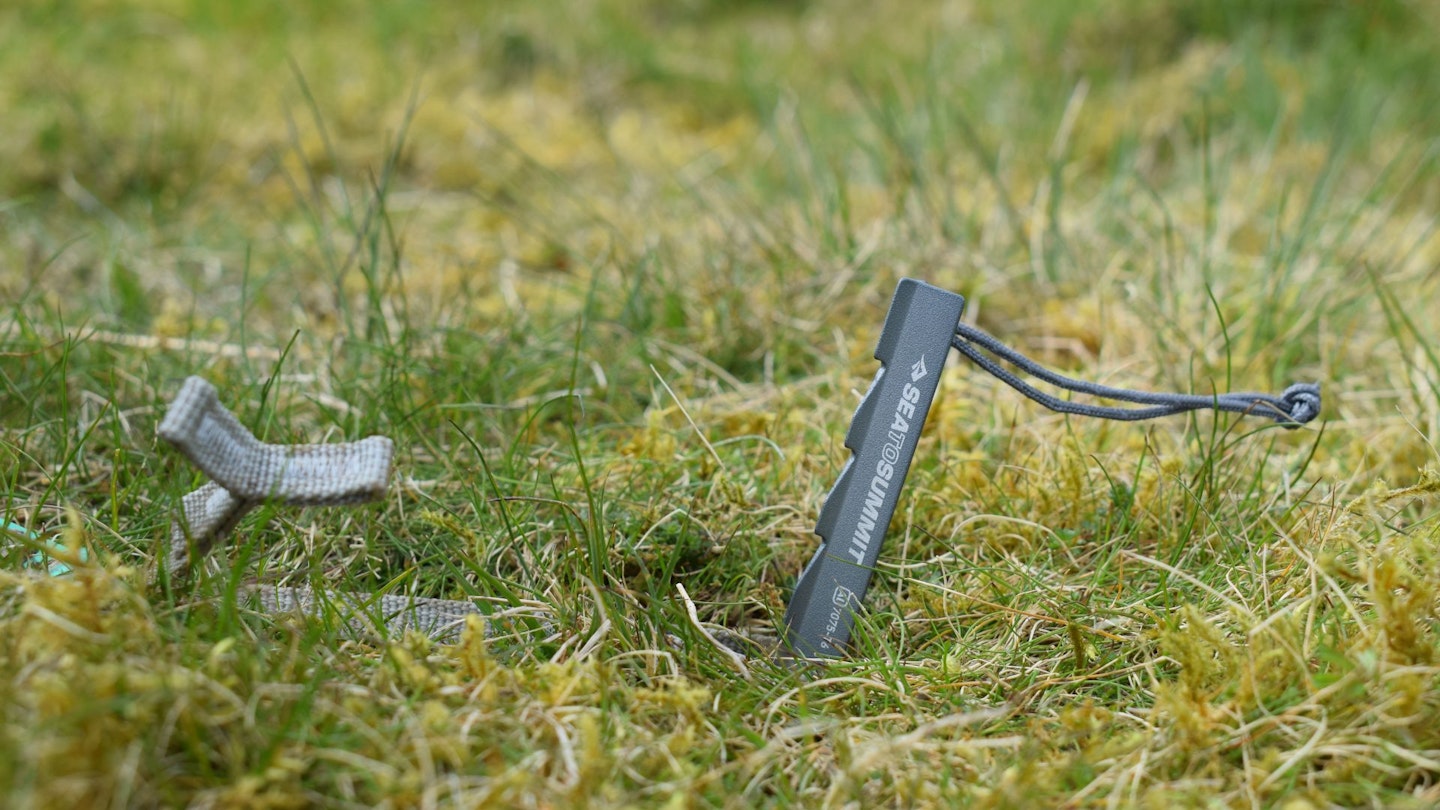
Pitching the flysheet along with a footprint brings the weight down to a meagre 971g. However, the compatible footprint is a separate purchase (£50). As with all Sea to Summit tents, the Alto TR2 Plus packs down into separate compartments, one for the poles, one for the pegs, a stuff sack for the inner and another for the rainfly.
These can either be combined into a 13cm x 53cm package or separated, allowing you to carry it as one unit or share the load with your buddies. Although, we’re not big fans of this carry case – for us it seems over-engineered and too fiddly and complex.
Features

A neat feature is the way the pole storage tube doubles up as a diffusing lightbar when combined with a head torch. This creates a pleasant reading light in the dead of night. The other stuff sacks also clip into the tent, doubling up as additional storage. The four guy lines are fully removable and attach to the rainfly via attachment toggles. As well as the footprint (£50), there’s also a compatible gear loft (£20) too, both of which Sea to Summit sell separately. The Alto TR2 Plus also comes supplied with a pole and a patch repair kit.
Verdict
A superb tent notable for its roomy interior and amazing headroom – but it’s expensive and not the
best for high winds
How we tested
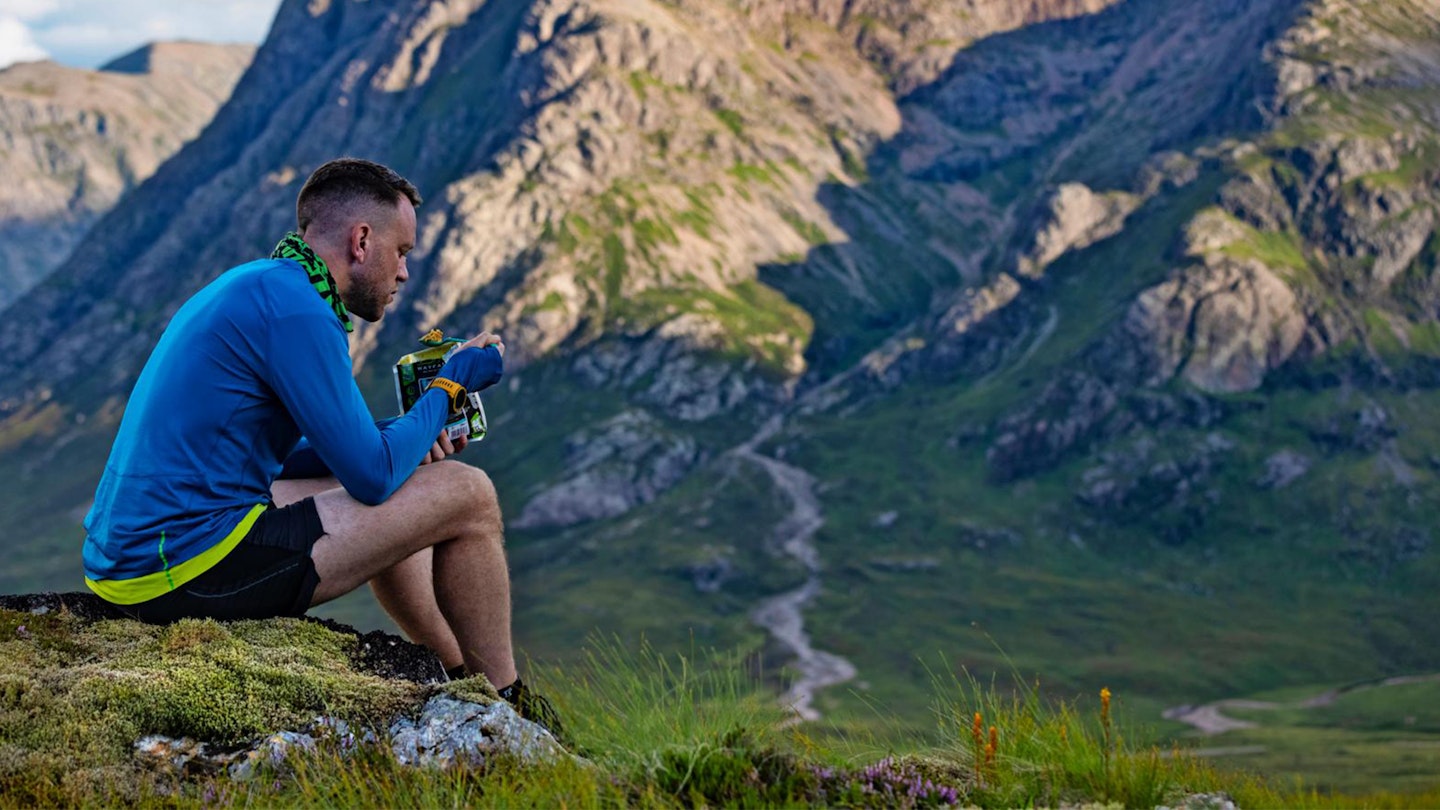
The tester for this tent was James Forrest, one of the UK's most recognisable adventurers, and all-round mountain man. James tested the Sea to Summit tent in his home stomping grounds of the Lake District over a very wet spring, alongside several other two-man tents.
